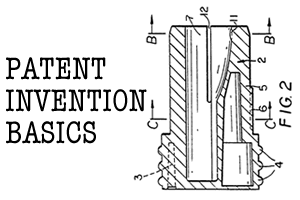 In this article we are going to talk about the patent invention basics to get you started in the invention patenting process.
In this article we are going to talk about the patent invention basics to get you started in the invention patenting process.
Inventors do a lot of hard work to come up with great ideas and ultimately inventions to improve everyone’s quality of life.
To stimulate that process and provide economic incentives for people to develop valuable inventions, the US and most Western governments provide legal protection for inventions for a limited period of time, if an inventor establishes their invention is novel and useful.
What A Patent Is For
A patent provides 20 years of exclusive ownership rights over new inventions that meet the standards provided for review. Patented inventions must be found useful by USPTO standards.
One purpose of patent protection is to stimulate creativity and reward investment in new ideas and their applications.
What Is A Patent Not For
The patent invention process falls under certain limits and categories. Patents do not cover arrangements of words, which are covered under copyright or brand-related images, which are covered under trademarks. They also do not protect any invention that is not original or closely that resembles what is already known in the field. There are also things present in the world that are considered ideas or considered “natural” like dirt, literally. These things are not patentable.
Who Makes A Patent Invention Official?
The United States Patent and Trademark Office (USPTO) makes a patent invention official. The process of assessing whether an invention is patentable is called patent prosecution. It requires submission of paperwork to support the invention and show that the invention is original and not obvious to professionals in the field.
When the patent invention process is complete if it is successful a patent is issued and the invention receives a patent registration number. The USPTO offers a lot of information about how to patent at its website www.uspto.gov.
The Three Types of Patents
A patent invention may fall under the following categories:
Utility Patents
Protects machines, methods/processes, compositions (which include modified genes) and variations thereof.
Design Patents
Protect the outward appearance of an item, how it looks. Furniture and highly useful common items often receive design patents, like a special hook to hang a coat on that has an unusual shape.
Plant Patents
Protect plants (the green things that grown in your house and in the woods). It is a highly specialized area and if this is the type of patent you are interested in you are probably not patenting the plant on your own.
A Novel Patent Invention
If an inventor has a great idea, the most important thing to establish is whether the idea is patentable. Patentability affects the value of the invention in the marketplace and knowing whether it is patentable enables an inventor to make decisions about how to sell or market the invention.
A basic patent search can be performed on Google, at the patent search office, and many other free services.
If the inventor searches and finds nothing then it is worth investing to have a professional searcher look and see what they can find. Professional searchers will perform that function for a few hundred dollars and can save an inventor from making a substantial investment they would not otherwise make.
If the inventor searches and does find something that sounds like his or her invention, they may want to look further into what the patent covers to determine if it includes the same invention that he or she wants to patent.
The Traditional, Full Patent Invention Application
This requires quite a bit of money, often thousands of dollars or more. The typical patent for an invention also takes more than a year and up to several years to be approved, so getting a patent is a commitment.
The Provisional Patent
The provisional patent is basic paperwork that describes the invention and gives the filer a year to “get going” on the full patent application. It costs a few hundred dollars to file so many inventors start here. It is important not to let the term expire without making a decision about whether to follow through with the patent.
Hire a Professional
For most serious endeavors to develop an invention it is worth hiring a patent agent or patent attorney to work with the invention and prepare the application materials. The USPTO will likely require changes to the patent and have questions throughout the process, and it is helpful to have someone to respond who is knowledgeable.
While there are fees, there is little purpose in going through the process of applying for a patent and then not receiving one because the application was not completed or followed through with sufficiently.
A patent is only as valuable as the invention that it protects, so it is important to evaluate whether the invention warrants the financial investment. The process of receiving a patent invention is quite a bit of work, but one that many inventors have found to be worthwhile.
